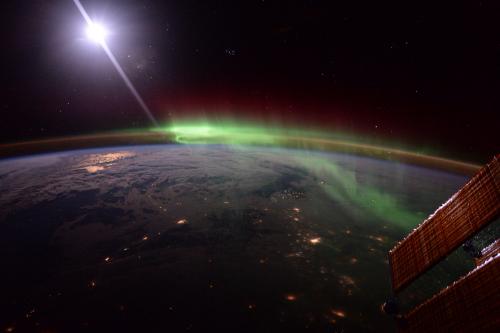Aeronomy studies Earth's atmosphere
a multidisciplinary science based on observations that contributes to the knowledge of the atmospherical environment from the Earth to the Sun
Its basic field of investigation is the stratosphere, the atmospheric region just above the troposphere in which the main meteorological phenomena take place. From there it extends into interplanetary space, up to hundreds of thousands of kilometers from the Earth, where there is no more atmosphere, but where the magnetic field of our planet is still present.
Aeronomy studies all atmospheres in space
In general, aeronomy is the science that studies all planetary atmospheres in which physical and chemical processes, resulting from the dissociation and ionization phenomena under the influence of the solar radiation, are important.
Examples of atmospheric phenomena
- ozone hole
- greenhouse effect
- aerosols due to volcanic eruptions
- radio wave propagation in the ionosphere
- magnetic storms which disturb telecommunications
- radiation belts which can be dangerous for astronauts and damage satellite electronics
- orbital perturbations and the decay of artificial satellites due to the air drag
Aeronomy history
The word "Aeronomy" became official in 1954 when the International Union of Geodesy and Geophysics (IUGG) adopted it. Aeronomy has grown considerably with the launch of artificial satellites during the International Geophysical Year 1957-1958 and the development of new techniques for observations from space.
Historical evolution of scientific research in the field of aeronomy.


